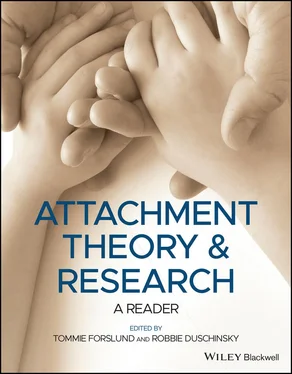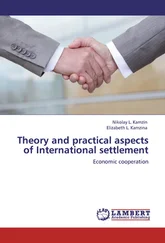In order for an animal to maintain personal‐environmental homeostasis, and in order, too, for it to find its way to particular parts of that environment and to treat appropriately different individuals in it, the animal must have available two working models, one of the environment and the other of the self as agent . There is good reason to believe that working models of both these types are built in the brain. In addition, there is evidence suggesting that, once built, these working models remain relatively stable, namely, relatively impermeable to dissonant information.
Maintenance of working models in a stable and relatively unchanging state I propose to term representational homeostasis. Representational stability appears to be maintained by cognitive processes that accept information compatible with an existing model and that reject, or scrutinise with great caution, information that is, or at least seems, incompatible.
The survival value of morphological, physiological and ecological homeostasis is, of course, not in doubt. The survival value of the latter two categories of homeostasis – personal environmental and representational – is by contrast, open to debate. Nevertheless, there is good reason to believe that at least the first of the two aids survival. By maintaining a familiar physical environment and familiar companions an animal is more likely to be able to find food and drink, and more especially to achieve protection from natural hazards – from predators, from eating poisonous foodstuffs, from falling and drowning, from cold and rain.
The survival value of representational homeostasis may seem more problematic. Nevertheless a good case can be advanced. It seems not unlikely, for example, that perceptual constancy, the advantages of which are not disrupted, is itself an aspect of representational homeostasis. Indeed, another way of describing representational homeostasis would be ‘conceptual homeostasis’.
When the uses to which a working model is put are considered, the advantages of ‘conceptual constancy’ become apparent. Once a working model has been built it becomes a tool with which information is processed, classified and filed, plans are framed, and their execution is monitored. Whenever a working model is undergoing revision of more than minor degree it is to that extent unserviceable. Perception and inference are less certain or even confused; planning is less prompt, execution less practiced. Furthermore, since shared plans can only be conceived and executed in collaboration with others provided that working models are also shared, an individual holding an idiosyncratic model of the world or of himself is likely to find himself facing the world alone.
Whilst it seems likely that the revision of working models tends always to be resisted, their cautious extension in familiar directions may be accepted fairly readily. Science is a social process whereby extensions of working models can come to be agreed; whilst in a scientific community even agreed revisions of working models are, in the long term, not impossible.
Two sciences have been concerned with the phenomena of personal‐environmental homeostasis: they are ethology , notably the work on imprinting, and the object‐relations approach within psychoanalysis , notably the views advanced by Fairbairn. In neither case, however, have workers been greatly concerned with the homeostatic properties of the phenomena studied. Insofar as psychoanalysts have invoked the concept of homeostasis, they have formulated it either in terms of maintaining a hypothetical psychic energy, or tension, within certain limits (e.g., Freud, Menninger) or else in terms of self‐esteem (Engel; Sandler & Joffe). Within the scheme advanced here, maintenance of self‐esteem is viewed as constituting a special case of representational homeostasis. Formulations regarding quantities of psychic energy or levels of tension are not found useful. 3
Other disciplines interested in the phenomena are the school of cognitive psychologists studying cognitive dissonance (Festinger, 1957) 4 and certain traditions in the philosophy of science (e.g. Kuhn, 1963). 5 It is noteworthy, however, that in both cases there is a tendency to be more concerned with the disadvantages than the advantages of ‘conceptual constancy’.
Within any of the five categories of homeostasis described states are never maintained more than relatively stable nor, except rarely, do set‐points and limits persist unchanged during the life‐cycle. In describing any kind of homeostasis it is necessary always to specify the period of time during which stability is maintained. What appears homeostatic over a longer period may appear unstable over a shorter one. For example, the annual migrations of geese from wintering ground to breeding ground and back again to wintering ground are stable over years but would appear unstable were the period of concern confined to a few months. Similarly, the behaviour of a commuter is stable over months but would appear unstable over hours and also over particular weeks. A form of homeostasis that applies over the longest periods of all is genetic homeostasis, namely maintenance of a population’s gene‐pool in a steady state over successive generations, which entails maintaining gene frequencies stable whilst preserving genetic variability.
The five categories of homeostasis listed all concern an individual organism. By contrast genetic homeostasis concern a population. There are other categories of homeostasis also that are found only at a supraindividual level. Examples are familial homeostasis as seen in the human family (Jackson, 1957), 6 social‐group homeostasis as seen in many primate groups in the wild and also in human groups (Lawson, 1963), 7 and demological homeostasis as seen in studies of population densities of animal species (Wynne‐Edwards, 1962). 8 Though each of these other categories of homeostasis is of great interest, both for behavioural science in general and for understanding human problems in particular, their examination lies outside the scope of this essay.
Throughout the natural life‐cycle of an individual of any species there are progressive changes in most of the homeostatic set‐points, e.g. body measures change, pulse‐rate drops, hormone levels change, habitat area increases, representational models become more differentiated and detailed. These developmental changes are indices of growth and maturation and usually follow a fairly predictable course. There is thus stability in the pathway of change. The tendency for organisms to maintain relatively steady developmental pathways, despite variation of environment and despite limited deviation along the route, is termed by Waddington (1957) 9 homeorhesis. The term he gives to each stable pathway is ‘creode’.
For each measure and category of homeostasis there is (probably) a corresponding measure and category of homeorhesis. This is certainly so in the case of most morphological, physiological and ecological measures, all of which show a fairly high degree of homeorhesis in all species. In the case of the other two categories of measure (personal‐environmental and representational) the position is less clear, because understudied. I suspect, however, that in these cases too there is a fairly high degree of homeorhesis.
When a species is endowed genetically with a high degree of developmental homeorhesis, the course of development of individuals is rendered relatively independent of even large fluctuations of environment. This can make for adults of a fairly high average degree of adaptedness to the usual environment even should their development have occurred in atypical environments. If this genetic strategy is carried too far, however, the species loses its adaptability. In the long run the species´ environment might change so much that the single creode characteristic of its development might prove maladaptive, and, with no adaptability left, the species would become extinct.
Читать дальше












